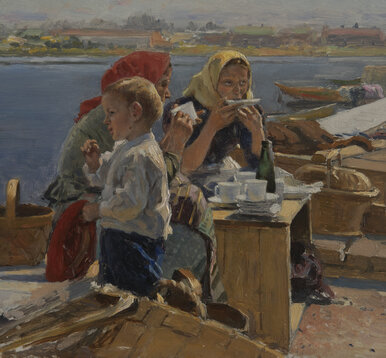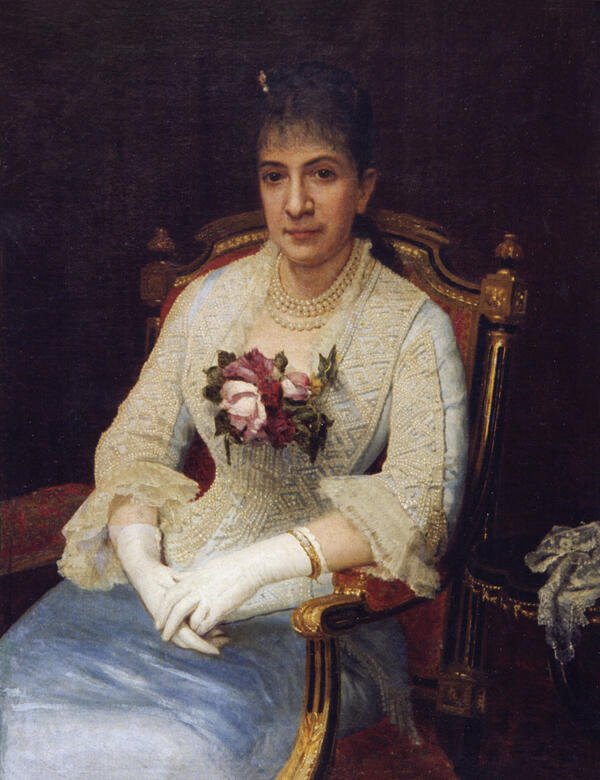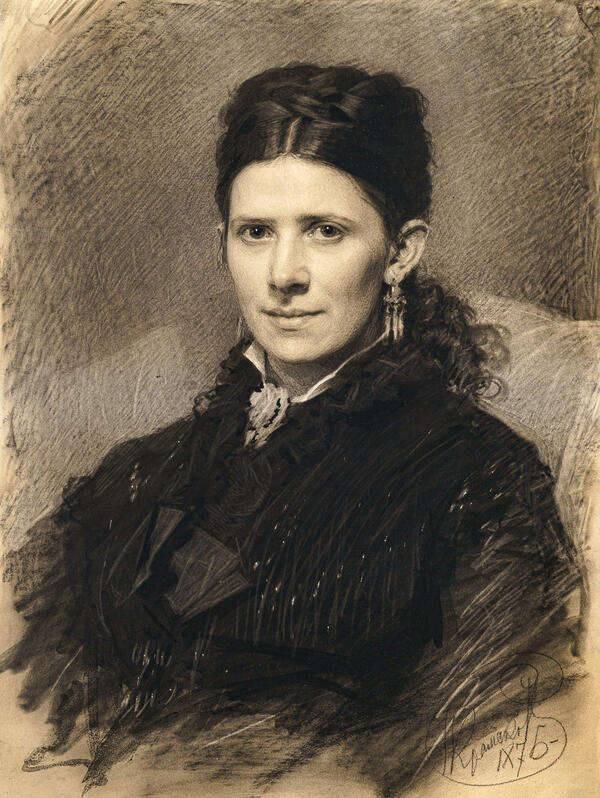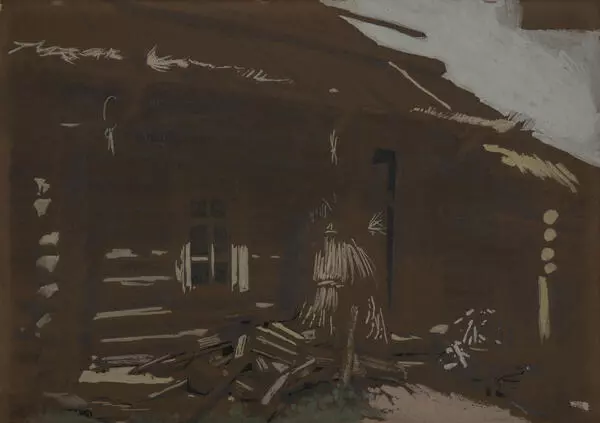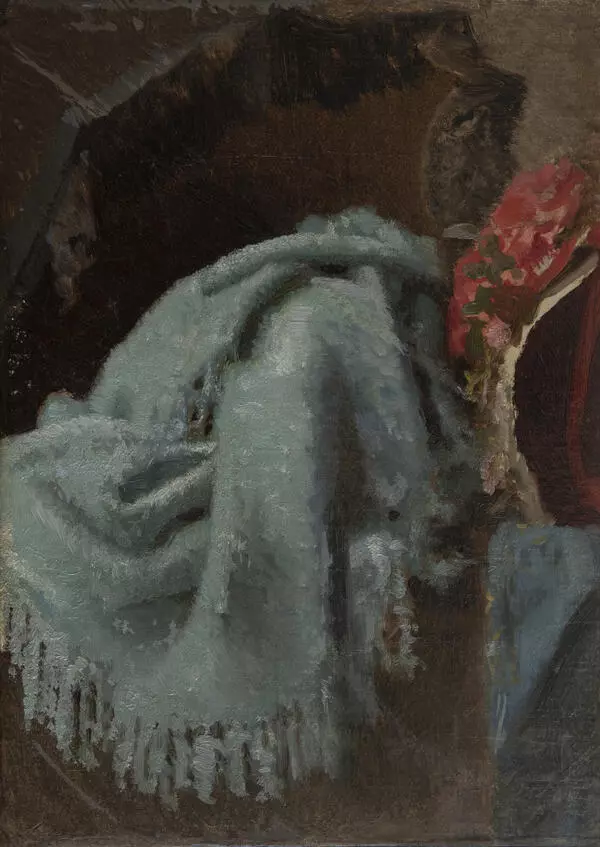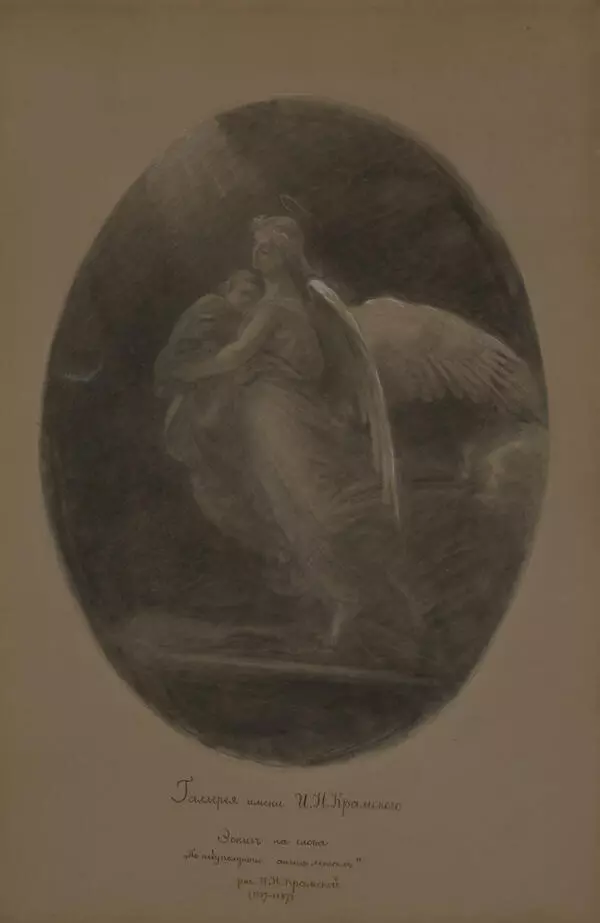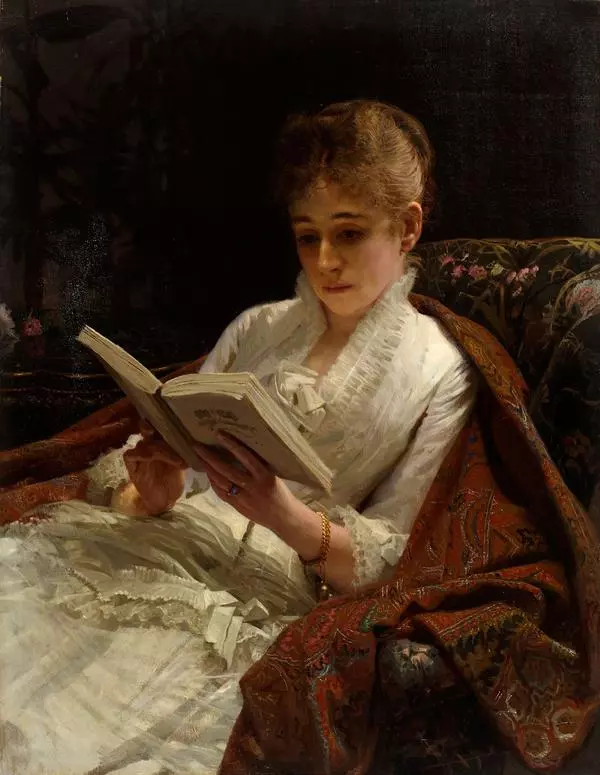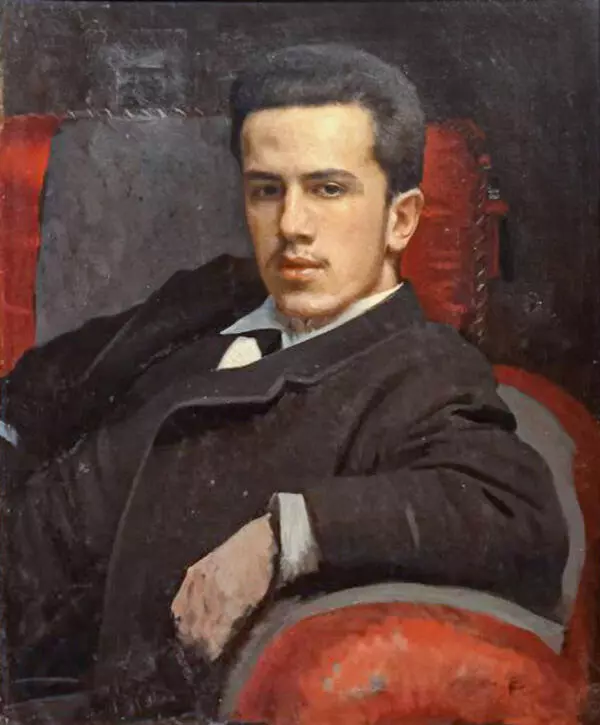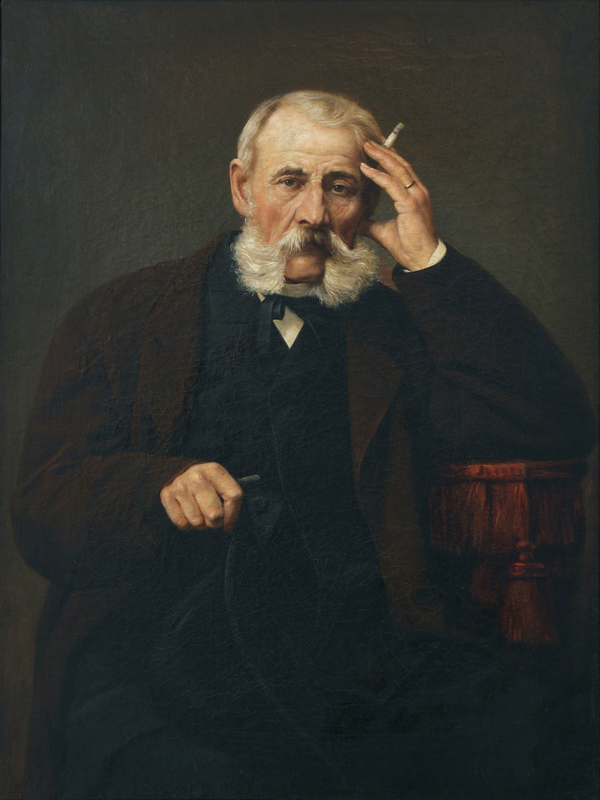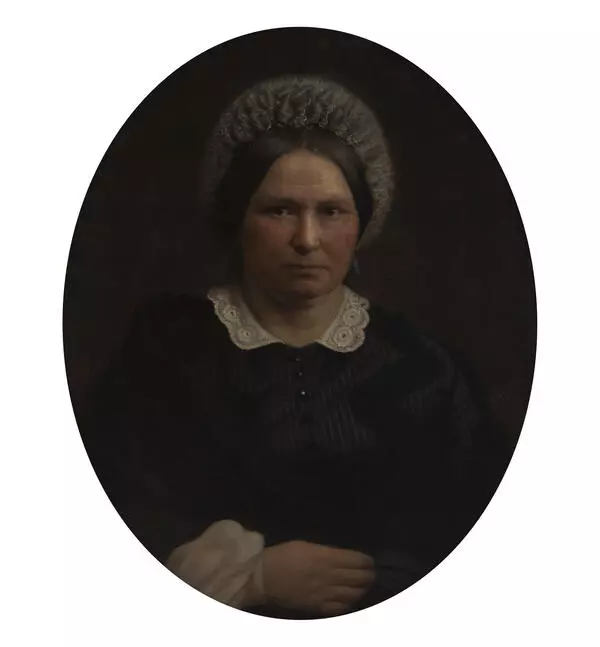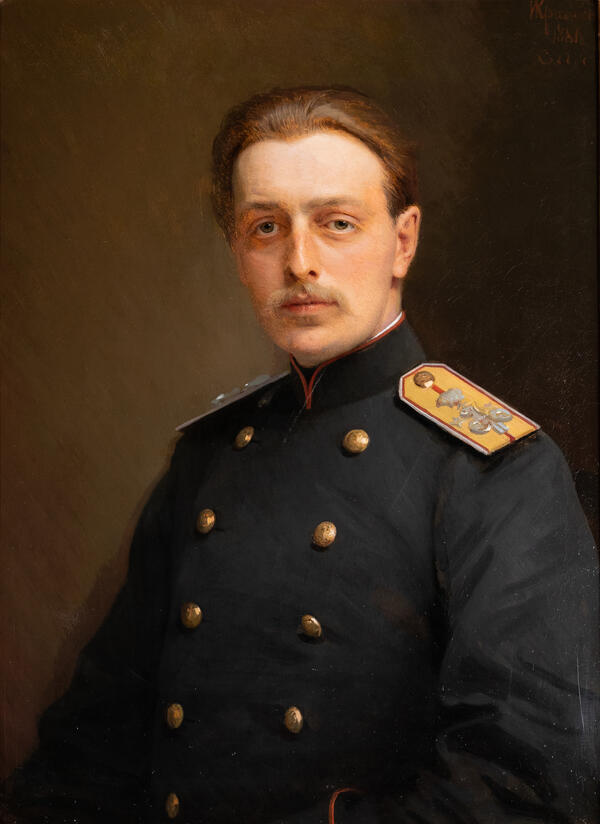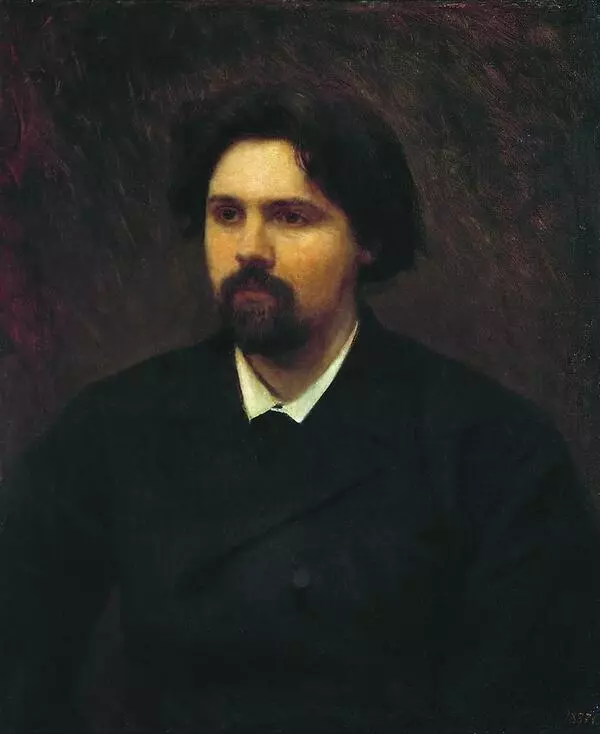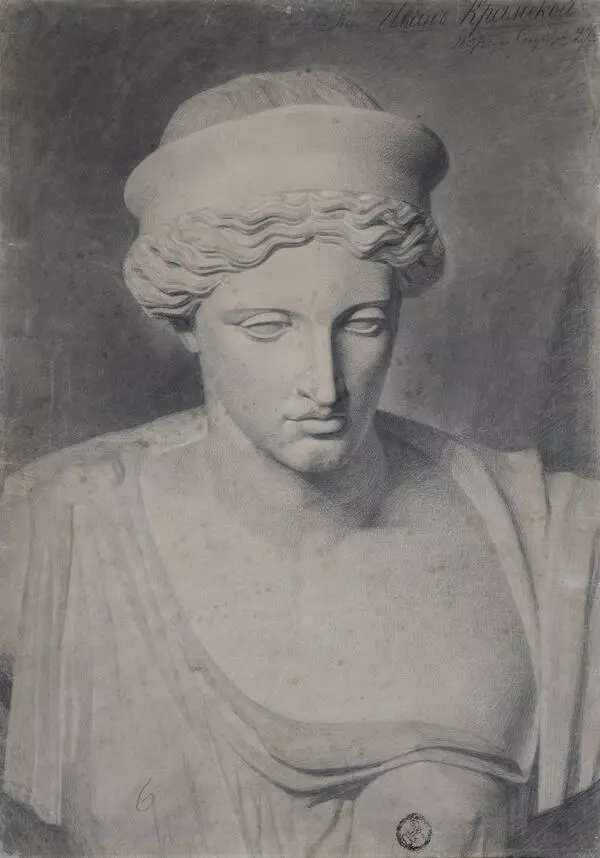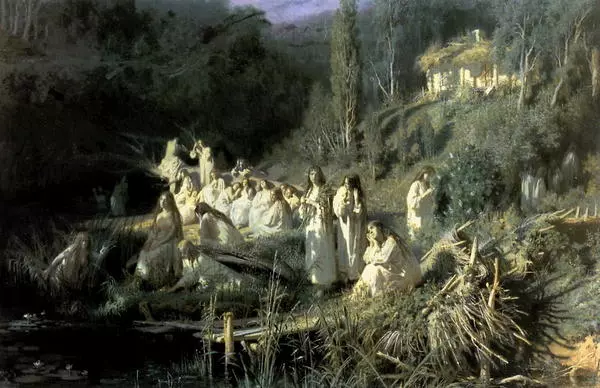Apart from drawings, the hall of the Ostrogozhsk Museum titled “The St. Petersburg Period in the Art of Ivan Kramskoy”, includes two paintings — “Model with a Coin” and “Model with His Hands on His Head”.
The high level of these academic works — the pencil drawings and oil paintings of models — makes it possible to classify them as artworks. As part of the exhibitions of fine arts museums, these works provide an excellent opportunity to trace the development of painters and their individual style.
This oil painting is created in the typical manner of an academic drawing but looks unconventional. The education system at the Imperial Academy of Arts was structured well. At first, beginner artists mastered basic elements and geometric figures. Later, they started copying parts of head and body from other drawings. After that, they studied gypsum statues — copies of ancient masterpieces. Only after successfully completing this course, they began drawing from life.
Only men worked as models at the Academy of Arts. They lived at the Academy, earned a salary, and received meals. Models and artists had trusting relationships which is also confirmed by a quote from the artist Nikolai Ge, “A model is not a servant but rather an assistant, a partner, and even a friend.” The names of some models made it into the history of fine arts. Many models appreciated the talent of beginner draftsmen and painters and gathered their own collections of paintings and drawings. Interestingly, women did not work as models, and the nude female body was studied mainly based on ancient statues.
Kramskoy left more high-quality study drawings from life than other artists. Teachers and fellow students noted their high technical and artistic quality. Academic images of models were not designed to be life-like portraits. However, Ivan Kramskoy stayed true to his artistic principles and achieved verisimilitude in the images of models, even reflecting their mood and personality. In painting the “Model with His Hands on His Head”, Kramskoy used the technique that was typical of portraits and later became the basis of his art.
The high level of these academic works — the pencil drawings and oil paintings of models — makes it possible to classify them as artworks. As part of the exhibitions of fine arts museums, these works provide an excellent opportunity to trace the development of painters and their individual style.
This oil painting is created in the typical manner of an academic drawing but looks unconventional. The education system at the Imperial Academy of Arts was structured well. At first, beginner artists mastered basic elements and geometric figures. Later, they started copying parts of head and body from other drawings. After that, they studied gypsum statues — copies of ancient masterpieces. Only after successfully completing this course, they began drawing from life.
Only men worked as models at the Academy of Arts. They lived at the Academy, earned a salary, and received meals. Models and artists had trusting relationships which is also confirmed by a quote from the artist Nikolai Ge, “A model is not a servant but rather an assistant, a partner, and even a friend.” The names of some models made it into the history of fine arts. Many models appreciated the talent of beginner draftsmen and painters and gathered their own collections of paintings and drawings. Interestingly, women did not work as models, and the nude female body was studied mainly based on ancient statues.
Kramskoy left more high-quality study drawings from life than other artists. Teachers and fellow students noted their high technical and artistic quality. Academic images of models were not designed to be life-like portraits. However, Ivan Kramskoy stayed true to his artistic principles and achieved verisimilitude in the images of models, even reflecting their mood and personality. In painting the “Model with His Hands on His Head”, Kramskoy used the technique that was typical of portraits and later became the basis of his art.



